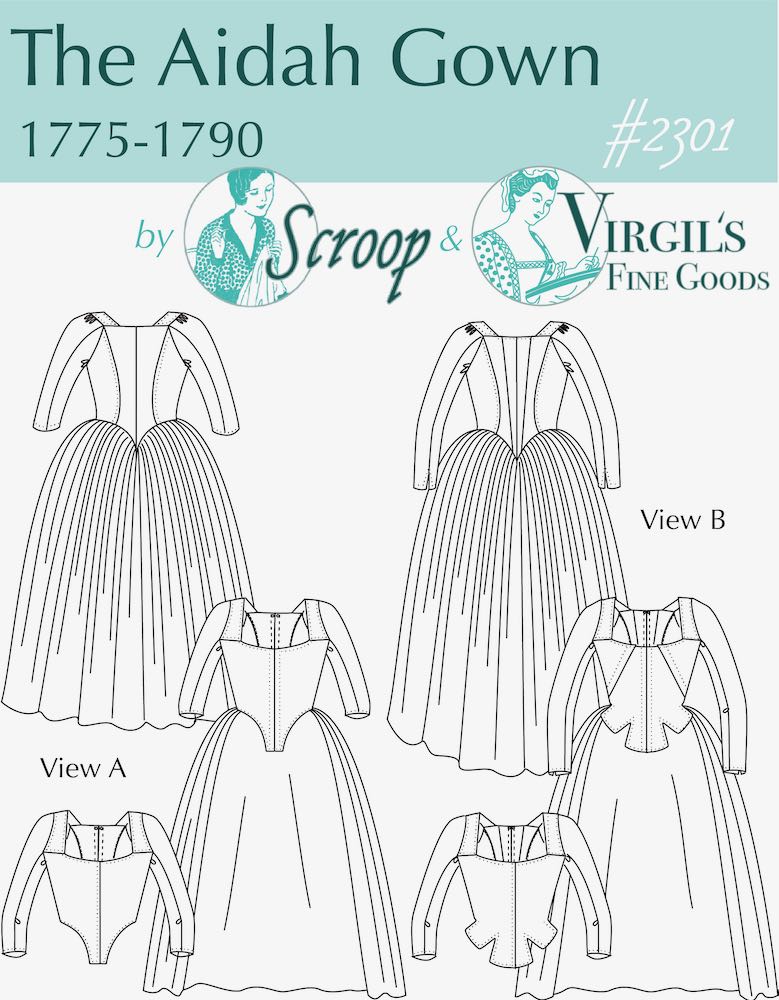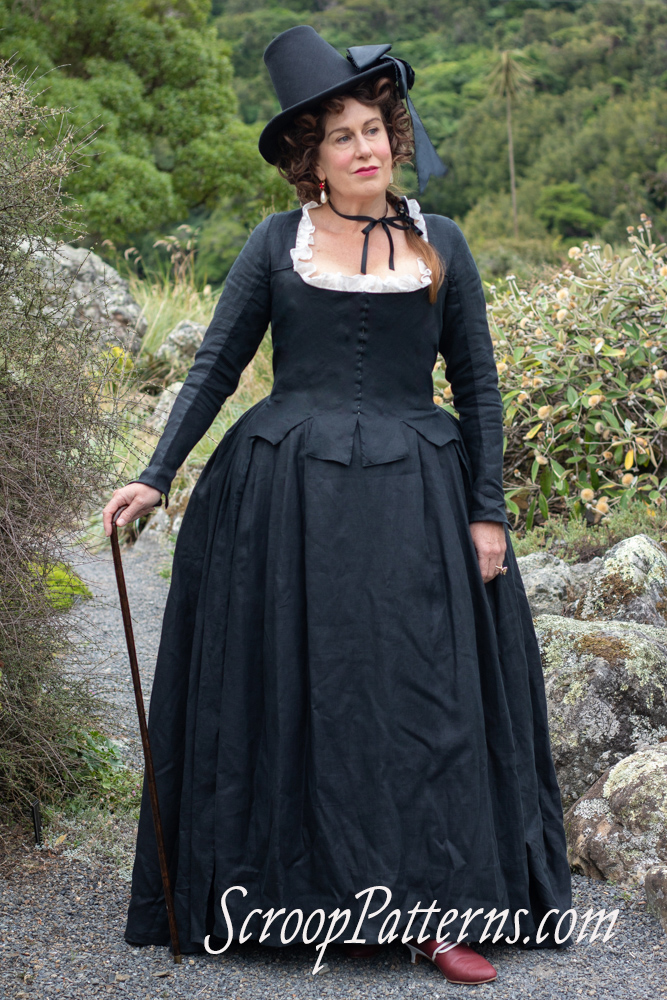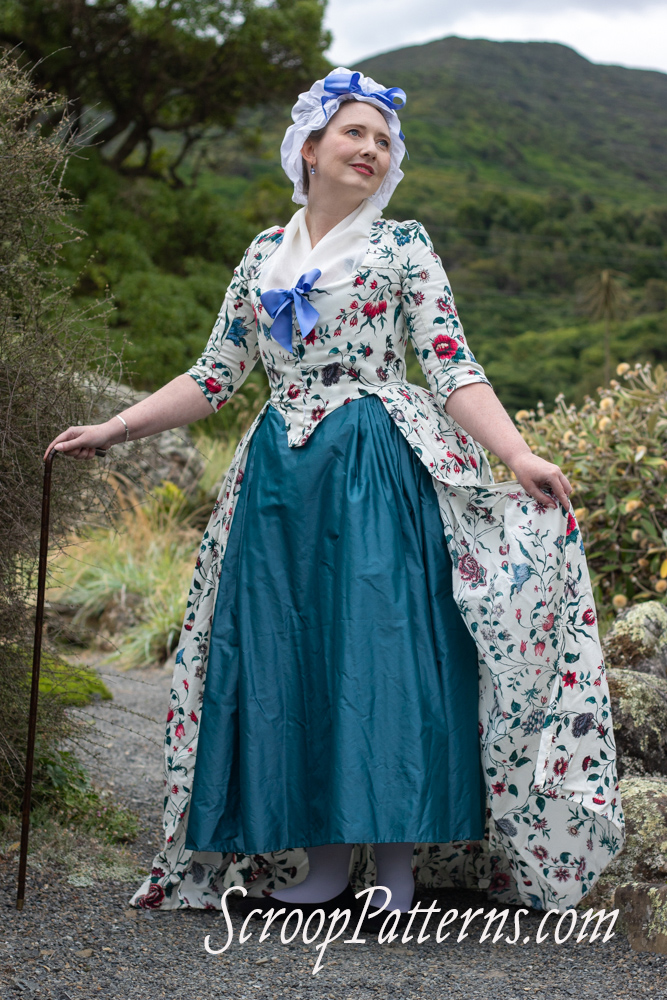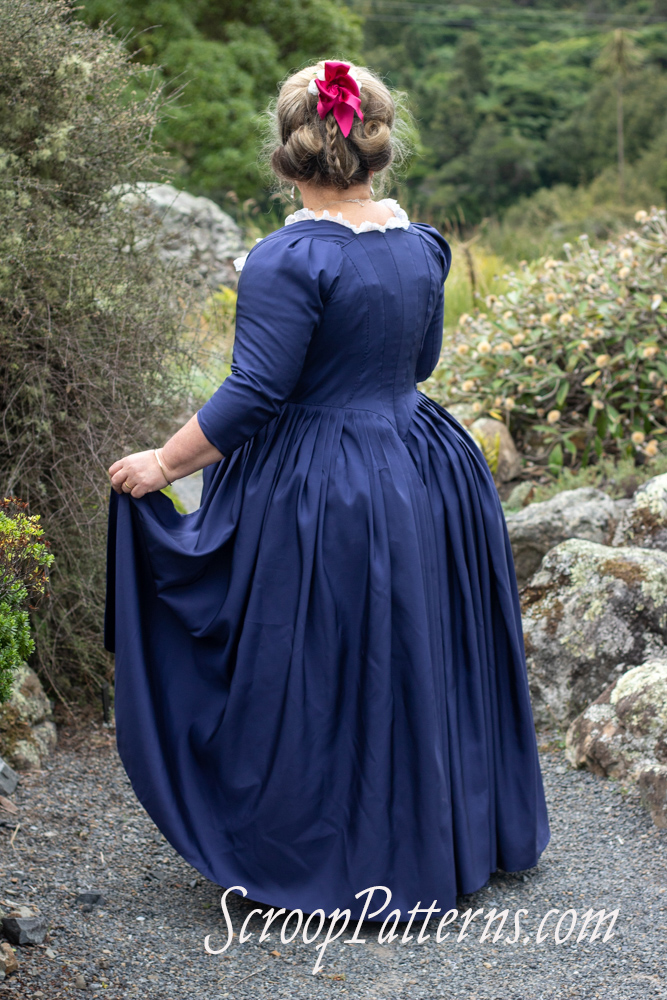We’ve hit the point in the Scroop + Virgil’s Fine Goods pattern collaboration where all our hard work in setting up the foundations of patterns is paying off! We’ve refined the our base patterns, our graphic designs, and our instruction layouts, and we can now put together new patterns much more quickly (although we’re still make extremely detailed, labour intensive patterns, so not that quickly).
What does that mean? It means that only 6 months after launching the Angelica, we have a sister pattern to the Angelica: the delightful Aidah Gown!
Wondering how to say it? It’s pronounced Aye-da, like Ada or Adah. Aidah was a variant 18th century spelling of Ada that we came across in our research.
Buy the pattern here! – and get 10% off for the first week!
Like the Angelica, the Aidah is a fashionable late 18th century Italian gown. It’s not just a repeat of the Angelica though: it has a different front and back necklines, different back panels, and two piece sleeves with three length options instead of one-piece sleeves with two length options.
View A has a different front point to either of the Angelica options, and View B features a tabbed bodice with optional cutaway front. Fasten either View’s front with pinned or hooked front closures, instead of the laced front closure of the Angelica.
Plus, the Aidah instructions include more historical information, and different construction techniques to the Angelica whenever there are multiple period-accurate options for how to construct this type of gown. Both patterns instructions are complete and accurate on their own, but if you have both, you’ll have a whole set of new techniques to add to your 18th century making skill basket.
But wait, there’s more! The Aidah is specifically designed to complement the Angelica, so that both patterns work as ‘expansion packs’ for each other. The sleeves of both patterns are interchangeable. Made the Angelica with the Aidah’s two piece sleeves, or the Aidah with the Angelica’s one-piece sleeve.
Additionally, the curved side-back seams of the two patterns are an exact match to each other, so the Aidah front can be fitted to the Angelica back, and the Angelica front + side front can be fitted to the Aidah back.
The detailed historically accurate sewing instructions cover everything you need to make your own beautiful versions, from first fitting to final trimming. There’s even a guide to making sleeve ruffles, tuckers, and fichu!
We’ve even developed an extremely clever pattern method for the skirt based on 18th century patterning techniques.
The pattern comes in bust sizes 30”-52” (76-132cm). To help you get the perfect fit there’s a 9-page fitting and pattern alteration guide.
We put so much work into this pattern to make it as well fitted, historically accurate, easy to make, and fun to wear as possible. Hopefully you’ll like the result!
Thanks to Amber’s historical knowledge the patterns are filled with meticulous historical details that will help you get the late 1770s-1790s look just right.
View A has a plain bodice front with a medium pointed front curve that ends in a truncated V, a two-panel back, and a skirt that finishes just above the floor (although we made this sample with the slightly trained skirt of View B).
View B features a tabbed bodice front with an optional cutaway front, full length or ¾ length sleeves, a four-panel back, and a slight train.
Buy the pattern here! – and get 10% off for the first week!
The Aidah Gown is the seventh collaboration between Scroop Patterns and Virgil’s Fine Goods. Our patterns combine Amber of Virgil’s Fine Goods’ extensive mantua making skills with my patternmaking skills.
Our goal is to bring you easy-to-use historical patterns with comprehensive size ranges and detailed historically-accurate instructions. The patterns are available as downloadable print-at-home patterns, to make historical sewing more accessible to sewists everywhere, and as paper patterns through Virgil’s Fine Goods and other stores.
We’re extremely proud of this pattern, and are so excited to see your versions!
All the gorgeous tester versions will be coming shortly! Their makes are so inspiring. They combined views, used our trim suggestions, and styled the gowns to their own taste.









This looks really good.
Thank you! We hope people think so
So excited to start working on this! Can the bodices be modified to be separate jackets rather than attached to a skirt?
Fantastic! 18th century gowns usually have quite different construction from jackets, so you’d have to do research on jacket construction if you wanted an accurate jacket using the pattern shapes as a base. If you’re just after the look, then absolutely!